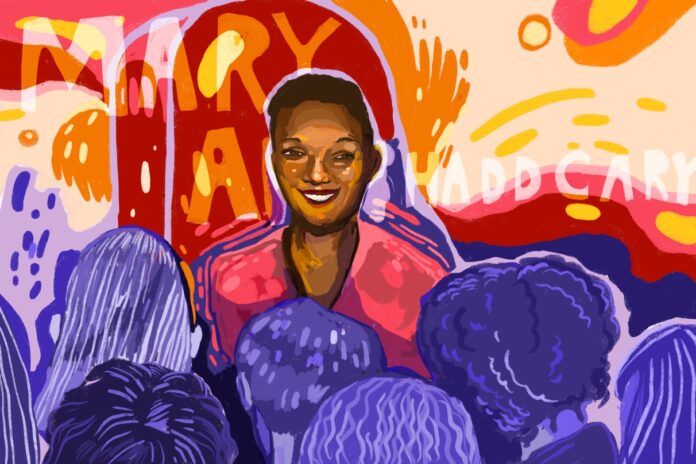
Nana aba Duncan announced the plan to launch a new centre dedicated to inclusion in journalism during a press conference in March.
During the March 31 press conference, Duncan, a journalism associate professor and Carty Chair in journalism, diversity and inclusion studies at Carleton University, called the centre the “first of its kind.” She added there are no other institutions focusing on promoting diversity and inclusion in Canadian journalism right now.
The centre is named after Mary Ann Shadd Cary, the first Black female newspaper publisher in North America. The name of the centre, which is planned to be based out of Carleton, was recently approved by Carleton’s senior management committee.
Duncan is seeking $5 million in funding to operate the centre in its first five years. She said she hopes to acquire this funding through assistance from Carleton University and several Canadian government ministries.
Duncan said she applied for a grant of $450,000 to be distributed to the centre over a period of three years from the Social Sciences and Humanities Research Council’s (SSHRC) Race, Gender and Diversity Initiative. Results were supposed to be announced in March but were not publicly announced until May 9.
In an email to the Charlatan, Duncan said she did not receive the grant but will continue searching for additional funding while engaging in preliminary research with the $15,000 in startup research funds given to her by the university.
Duncan said she is launching the centre because she didn’t feel like she belonged in the industry early in her journalism career. She attributed this to a larger problem in Canadian journalism, citing data from a Canadian Association of Journalists (CAJ) national Canadian newsroom diversity survey collected between November 2020 and July 2021.
The survey showed 80 per cent of newsrooms have no racialized people in top leadership roles and 68 to 78 per cent of part-time, full-time and supervisor roles are filled by white people.
CAJ chair and survey lead Zane Schwartz amplified these concerns in a press release accompanying the survey results, saying “the typical Canadian newsroom is not representative of the Canadian population.”
CAJ president Brent Jolly called the CAJ survey the “most comprehensive diversity survey in Canadian media history.” However, out of the 636 news media outlets which received invitations to the survey, only 209 responded with their respective data.
Duncan said she believed newsrooms withheld their data because they knew it would be bad.
“Data is information,” she said. “We need that data if we’re going to change.”
Duncan said she hopes this new centre combats these alarming statistics through research opportunities, community-based journalism and networking opportunities for journalists from marginalised communities.
She is joined in her efforts by fellow Carleton University journalism professor Adrian Harewood and journalist Eternity Martis. Martis is an award-winning Canadian journalist whose work centres around race and gender. She is the author of the bestselling memoir They Said This Would Be Fun: Race, Campus Life, and Growing Up.
The initial focus under phase one of the project will be on the relationship between journalism and Black communities in Canada’s past, present and future. It will span a three-year period and consist of five subprojects.
The subprojects will explore the experiences of racialized leaders in the news media, the experiences of Black journalists in Canada, the attitudes of Black youth towards journalism, journalism’s role in the life outcomes of Black communities in Canada and the history of Contrast—a prominent newspaper giving a media platform to Black Canadians in the ‘70s and ‘80s.
The centre’s focus also extends beyond the Black community. It aims to provide an inclusive space for journalists with diverse racial backgrounds, sexualities, gender identities and socio-economic statuses, according to Duncan.
Duncan noted the importance of newsroom diversity statistics in introducing actionable change, stressing the need for Canadian newsrooms to cooperate by participating in these surveys.
At the conclusion of the press conference, Duncan acknowledged the difficulty of acquiring funding, saying it is the first barrier she faces.
Like Shadd Cary, however, she seemed intent on accomplishing her goal.
“There’s no institution right now that focuses on supporting more diversity and inclusion in Canada’s journalism industry,” she said. “That’s the goal for the Mary Ann Shadd Cary Centre for Journalism and Belonging.”
Featured graphic by Sara Mizannojehdehi.





